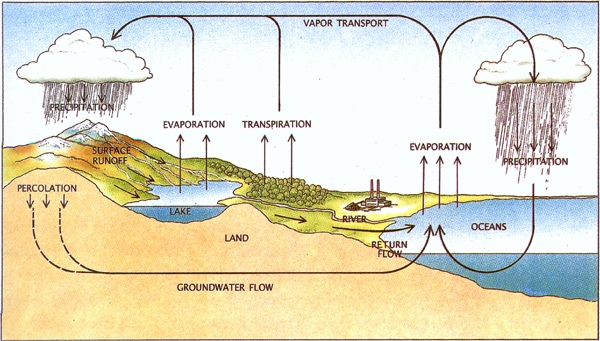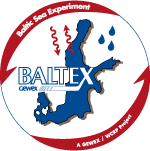Background > The water and energy cycle
What is the water and energy cycle?
The energy from the sun is the driving force behind all weather phenomena. Together with the earth´s rotation and the topography of its surface, it is responsible of all air and water movements in the atmosphere which we perceive as weather. Rain and snow, clouds and fog, solar radiation and wind are directly perceivable elements of the water and energy cycle.
The atmosphere carries huge amounts of water from evaporation over the oceans. Rain and snow brings the water back to the surface, where it is absorbed and accumulates in lakes and rivers, which eventually return the water back to the ocean. On its way through this cycle, water provides the basis of life, which itself can be considered as being part of the cycle.

Water, on its way through the cycle can have different appearances (phases): water vapur (clouds, fog, humidity), liquid water (rain, lakes, rivers, sea), and solid ice (snow, hail, sea ice). The energy of the sun (radiation, heat) drives the transitions between the phases, and the fluxes between the major "reservoirs" ocean, atmosphere, land surface, inland water bodies and ground water. The water and energy fluxes between these reservoirs can be measured by various field measuring techniques. The collected data can then be "fed" into computer models, which describe the balances between the reservoirs and help to understand the system under a changing climate.
A simple sketch of the major processes of the water and energy cycle of the Baltic Sea basin can be seen here (the "BALTEX Box").
|

